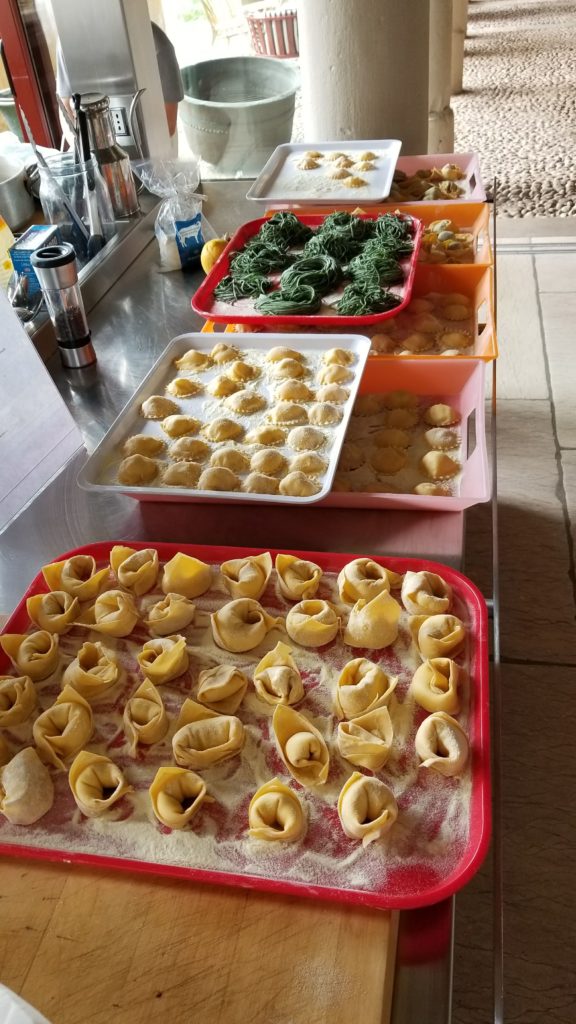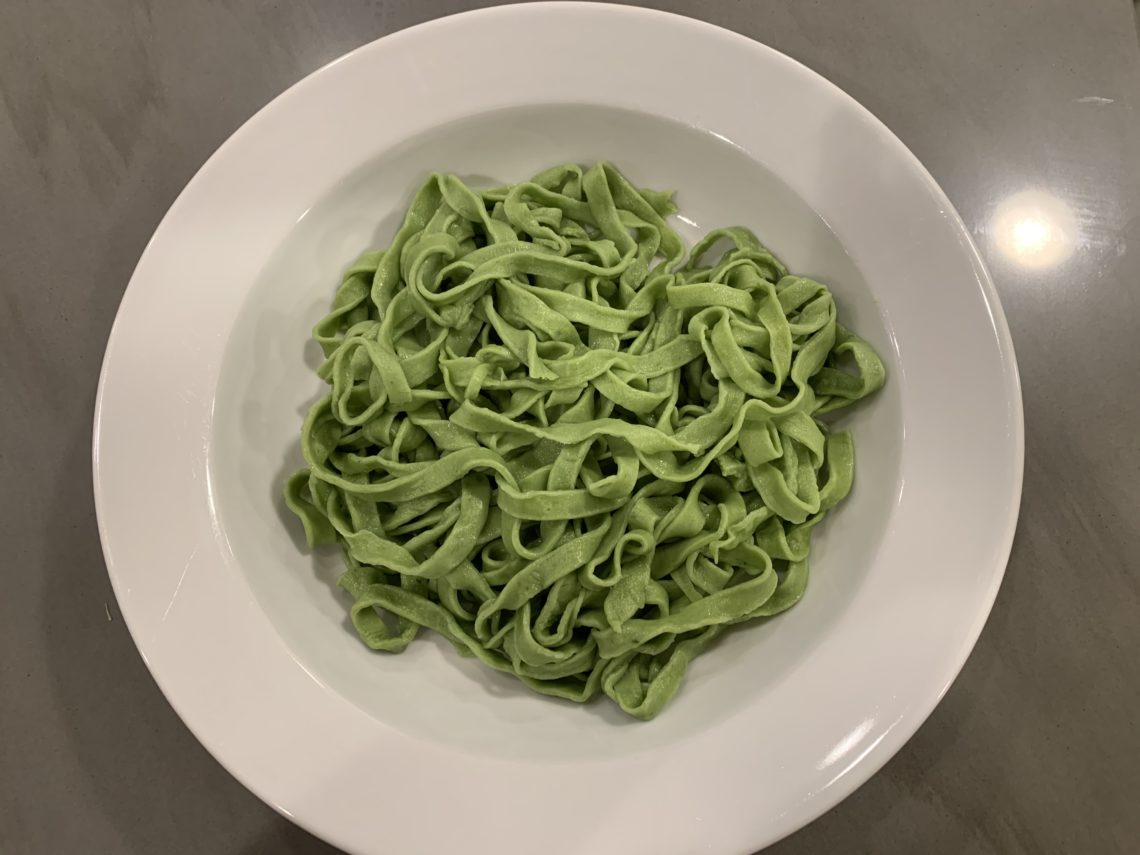
Making Pasta With Kids
A few years ago to celebrate Ryan’s 40th birthday, we attended a cookery school outside of Venice through Stirred Travel. We stayed in an Italian villa and learned Italian cooking (and eating!) while sipping on spritzes, red wines and Proseccos of the Veneto. It was an extraordinary trip; I cannot recommend it enough. When we got home with dreams of fresh pasta still in our heads, I recommended my parents get Ryan a pasta maker for his birthday (here’s the one we got) so we could replicate our Italian experience. Unfortunately, the pasta maker has remained in the box since because #time #noitalianspritzes.
But when you are stuck in the house social distancing with two 7-year-olds and nothing but time, you go a little crazy and pull out that pasta maker. Here is the spinach fettuccine recipe we made (and for some reason, Sam and Emma decided they needed to be in costume to make noodles, so there is also that):
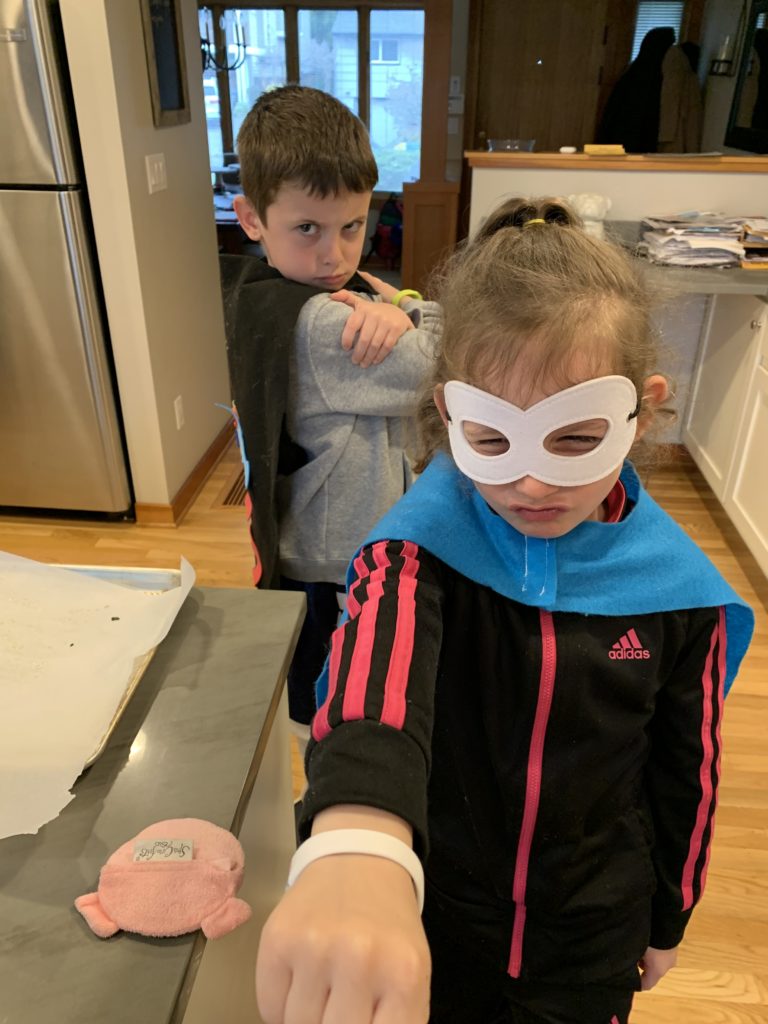
SPINACH FETTUCCINE
INGREDIENTS
- 2 cups 00 flour plus more for dusting (Italian cookery school taught us it has to be 00 flour. We found ours at PCC with a brand name of Farina Di Grano Tenero Double “0” Pizza Flour)
- 2 large eggs
- 3 egg yolks, plus more as needed
PREPARATION
- Mound the flour in the center of a large, wide mixing bowl. Dig a well in the center of the mound and add eggs and yolks. Using a fork, beat together the eggs and begin to incorporate the flour, starting with the inner rim of the well. The dough will start to come together in a shaggy mass when about half of the flour is incorporated.
- To make green pasta, steam or sauté 6 ounces (about 6 cups) baby spinach until just wilted. Remove from pan and spread out in a single layer on a parchment-lined baking sheet. When cool, squeeze the leaves thoroughly, a palmful at a time, then chop roughly. Purée in a blender with 2 eggs and 1 egg yolk, then add egg mixture to flour in the main recipe. (If you decide to make your pasta green, I suggest removing one (1) large egg from the above step).
- Use your fingers to continue to mix the dough. Press any loose bits of flour into the mass of dough. If needed, add another egg yolk or a tablespoon of water to absorb all of the flour. Once the dough comes together into a cohesive mass, remove it from the bowl.
- Transfer to a lightly floured surface and knead by hand for 4 to 5 more minutes until the dough is smooth, elastic and uniform in color. Wrap the dough in plastic and set aside for at least 30 minutes (and up to 4 hours) at room temperature.
- Line three baking sheets with parchment paper and lightly dust with flour. Set aside.
- Set up your pasta machine, clamping it to a table, countertop, or sturdy cutting board. Turn the dial to the widest setting (usually setting number 1 on the dial).
- Cut off a quarter of the dough. Rewrap rest, and set aside. Use the heel of your hand to flatten the dough into an oval approximately the same width as your pasta machine, about six inches. Pass the dough through the machine.
- Lay the dough out onto a lightly floured cutting board or countertop and neatly press together into halves, so it’s again about the same width of the pasta machine. Feed the pasta through again at the widest setting.
- Think of these first rollings as an extended kneading. Continue to fold the dough in thirds and roll it until it is smooth, silky and even-textured. Do your best to make the sheet the full width of the machine.

- Once the dough is silky and smooth, you can begin to roll it out more thinly. Roll it once through each of the next two or three settings, adding flour as needed, until the dough is about 1/4-inch thick.
- Once the pasta is about 1/4-inch thick, begin rolling it twice through each setting. As you roll, lightly sprinkle flour on both sides of the pasta to prevent it from sticking to itself.
- Roll out pasta until you can just see the outline of your hand when you hold it under a sheet, about 1/16-inch thick for noodles. (On most machines, you won’t make it to the thinnest setting.)
- Cut pasta into sheets, about 12 to 14 inches long. Dust the sheets lightly with flour and stack on one of the prepared baking sheets and cover with a clean, lightly dampened kitchen towel. Repeat with remaining dough.
- To cut noodles with a pasta roller, run the pasta sheets, one at a time, through the cutting attachment in your pasta maker, then toss with flour. Gently fluff and separate noodles and pile into nests of single portions (about 3 ounces). Place on baking sheets lined with parchment paper and dusted with semolina, and cover until ready to use.
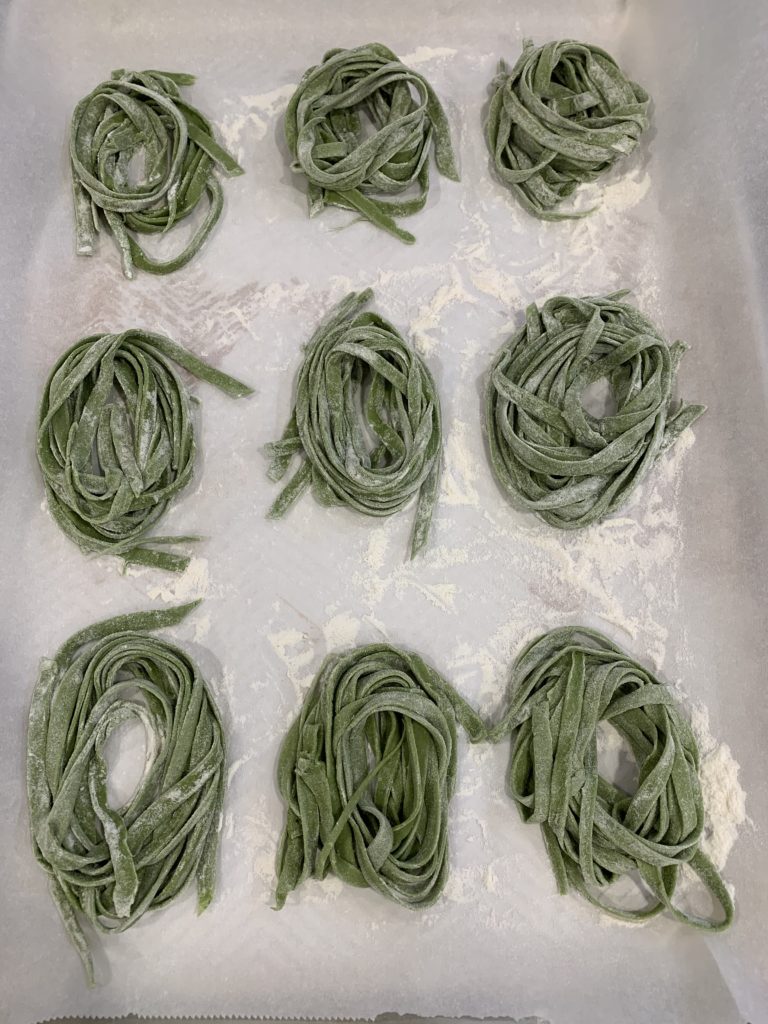
COOKING THE PASTA
- Unlike dried pasta, which should never be cooked past al dente, fresh pasta must be cooked through, but just barely. At first, the only way to know when the pasta is done is to taste it, so stand by the pot, tongs in hand, and taste repeatedly.
- Fresh pasta cooks quickly, often in 3 or 4 minutes. Have your sauce warm and ready before you drop the pasta into the pot. Cooked pasta should always be tossed with warm sauce — with the exception of pesto, which is raw — to ensure it gets coated properly. Cook pasta in plenty of heavily salted, boiling water.
- Bring the water to a rolling boil before adding the pasta. Otherwise, it may pile at the bottom of the pot and stick to itself. If cooking noodles, stir them with tongs or a wooden spoon after about a minute to encourage them to separate.
- To refrigerate: Store fresh pasta in a single layer on a parchment-lined baking sheet. Cover with plastic wrap to keep it from drying out. Refrigerate for up to one night.
The spinach fettucine noodles were amazing! Sam and Emma both ate platefuls. You can take Emma’s word for it that the dough is also tasty. Apparently, superhero 7-year-olds make really good pasta. Who knew?!?!
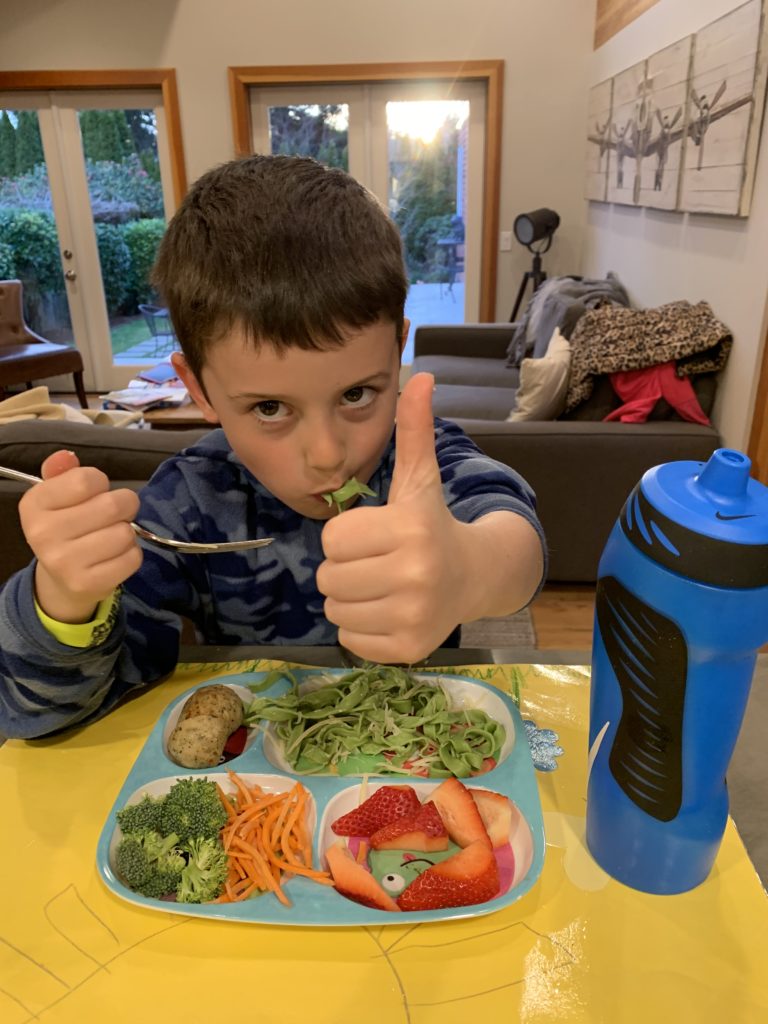

Recipe credit: Here is the full pasta recipe we generally followed through New York Times Cooking (Did you know you can just subscribe to this section of the online New York Times for just $40/year? We love the service, here is the link if you are interested).


